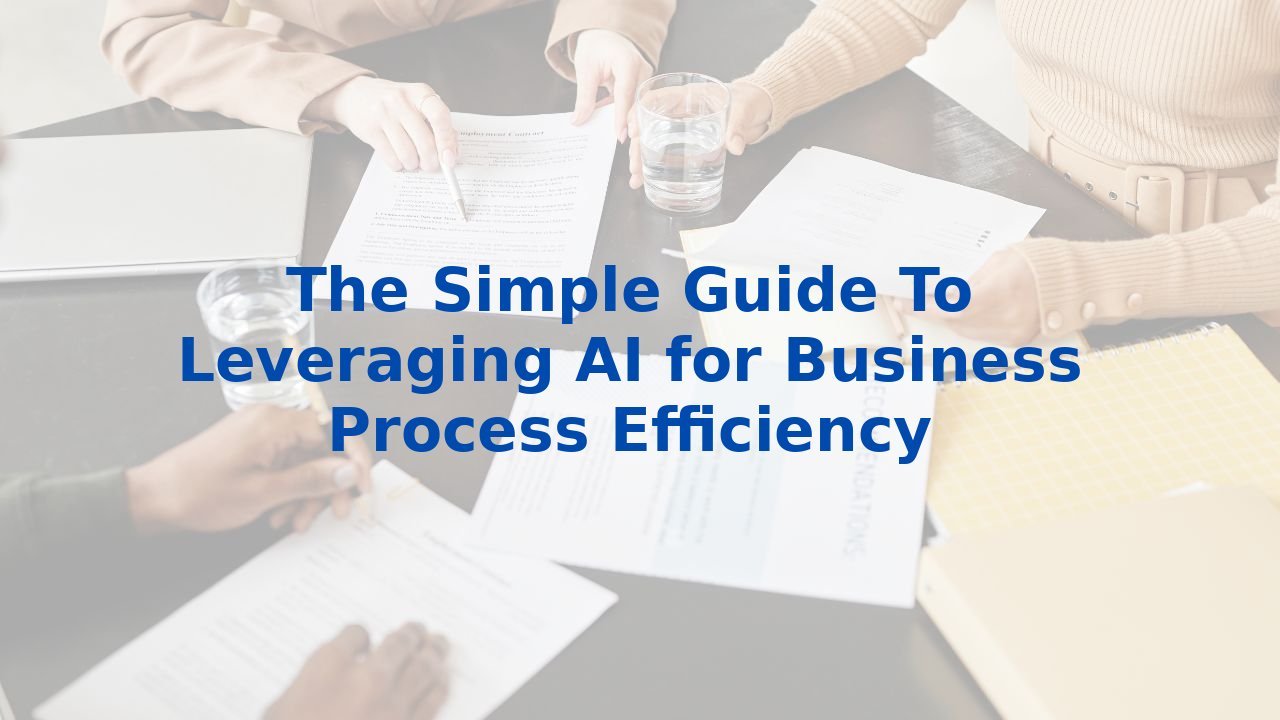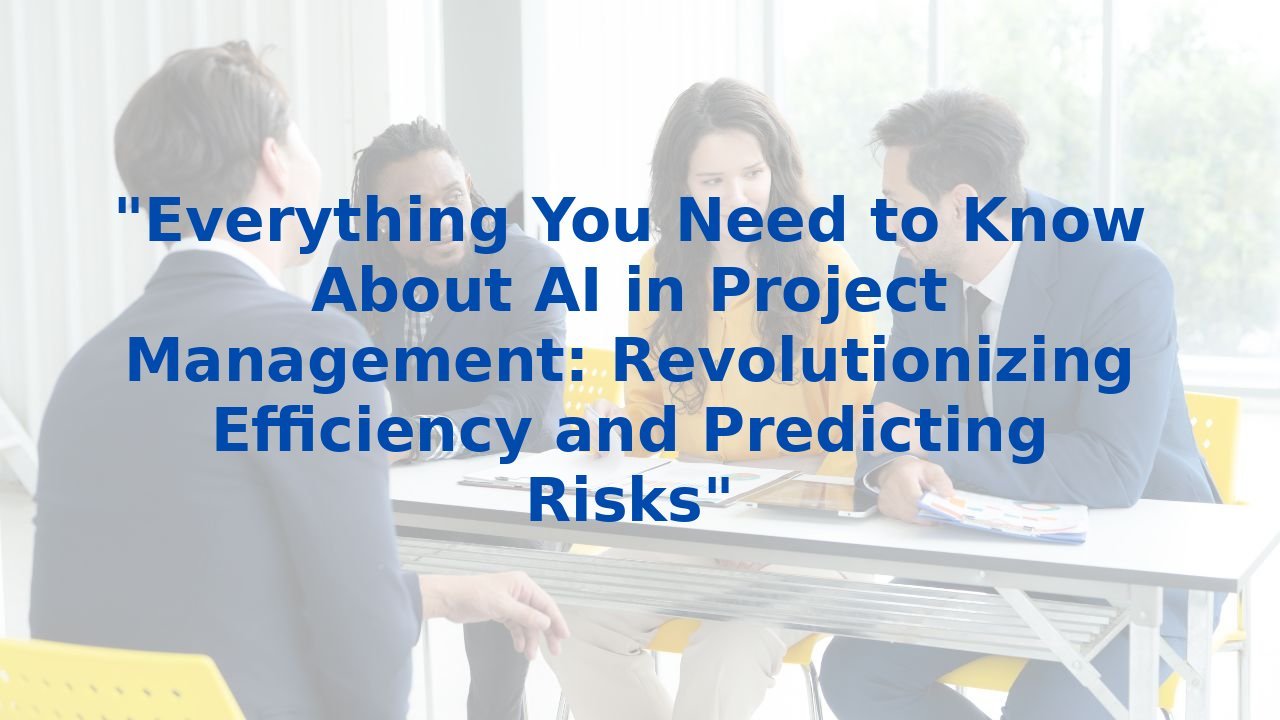The Simple Guide To Leveraging AI for Business Process Efficiency
The Simple Guide To Leveraging AI for Business Process Efficiency
In the whirlwind of today’s business landscape, efficiency isn’t just desired; it’s essential. In this quest for optimized workflows, artificial intelligence (AI) emerges as a groundbreaking ally, transforming how organizations operate and innovate. This guide will delve into the nuances of business processes and showcase how AI can be the catalyst for improved efficiency.
Understanding Business Process Management
Business Process Management (BPM) is the heartbeat of any organization, encompassing the systematic design, execution, and oversight of business processes. It targets the ultimate goal of refining efficiency, productivity, and quality. As the digital age unfolds, AI technologies have integrated seamlessly into BPM, redefining its capabilities and offering new pathways for enhancement.
How AI Enhances Business Processes
AI’s potential extends across various business processes through tools such as machine learning, deep learning, and natural language processing (NLP). Let’s explore the areas where AI is making significant strides:
Process Simulation and Optimization
Imagine a world where your organization can simulate various scenarios before committing to a change. AI facilitates this by analyzing historical data to identify patterns, allowing companies to create simulation models that calculate key performance indicators (KPIs). Through this insight, businesses can foresee bottlenecks and test potential modifications, enhancing decision-making efficiency.
Process Mining and Analysis
AI-driven process mining turns data into narrative. By analyzing data from various sources, AI unveils the intricate flow of processes, detecting deviations and uncovering inefficiencies. This capability not only illuminates weaknesses but also provides actionable suggestions for process optimization—transforming chaos into clarity.
Real-Time Monitoring and Automation
In an era where time is currency, AI excels at real-time monitoring, keeping tabs on processes and enabling instant interventions. Alongside monitoring capabilities, AI can automate routine tasks—whether it's processing invoices or scheduling social media posts—freeing up human minds to focus on strategic growth and innovation instead of mundane tasks.
Decision-Making and Predictive Analytics
Decisions often hinge on access to comprehensive information. With AI, organizations can harness structured and unstructured data, simulating alternative scenarios that guide decision-making processes. This enables teams to make informed choices, weighing potential risks and deriving actionable insights—transforming daunting decisions into manageable steps.
Risk Prediction and Proactive Measures
AI doesn’t just react; it anticipates. By analyzing historical data, AI can predict potential risks and bottlenecks, empowering organizations to act before issues escalate. This proactive stance enables businesses to adapt swiftly to market fluctuations, ensuring resilience in an unpredictable landscape.
Benefits of AI for Improving Efficiency
The integration of AI within BPM unlocks an array of benefits:
- Improved Efficiency: AI takes the reins on repetitive tasks, liberating human intelligence for critical thinking and strategy.
- Enhanced Decision-Making: Data-driven insights pave the way for informed, strategic decisions that align with organizational goals.
- Reduced Errors: AI systems effectively minimize human error, resulting in refined outcomes.
- Increased Consistency: AI embodies reliability, ensuring uniformity in process execution all the time.
- Real-Time Monitoring: Swift interventions become the norm, leading to seamless optimization in time.
The Importance of Training Employees for AI
While AI’s role in improving efficiency is undeniably transformative, the human element remains paramount. Investing in employee training is vital for maximizing the potential of AI:
- Understanding AI Tools: It’s essential for your team to grasp how AI tools function and how they integrate into existing frameworks.
- Data Analysis Skills: Equipping employees with foundational data analysis skills enables them to interpret AI-derived insights effectively.
- Adaptability: As AI reshapes processes, a culture of adaptability ensures smooth transitions into AI-driven workflows.
- Continuous Learning: Organizations should foster an environment of ongoing education, aligning their teams with the latest AI advancements and best practices.
Conclusion
AI is not merely a trendy buzzword; it’s a transformative force in Business Process Management. By enhancing simulation, mining, and automation, AI addresses the evolving demands of efficiency in businesses today. While the benefits are striking—ranging from improved efficiency and streamlined decision-making to proactive risk management—one cannot overlook the pivotal role of training in leveraging AI effectively. By combining advanced technologies with a skilled workforce, organizations can carve a path to sustained productivity and long-term success in an ever-evolving marketplace.
For organizations looking to invest in their most valuable asset—their people—exploring comprehensive training programs can pave the way for a thriving, AI-empowered environment. To learn more, visit our AI Training homepage.



